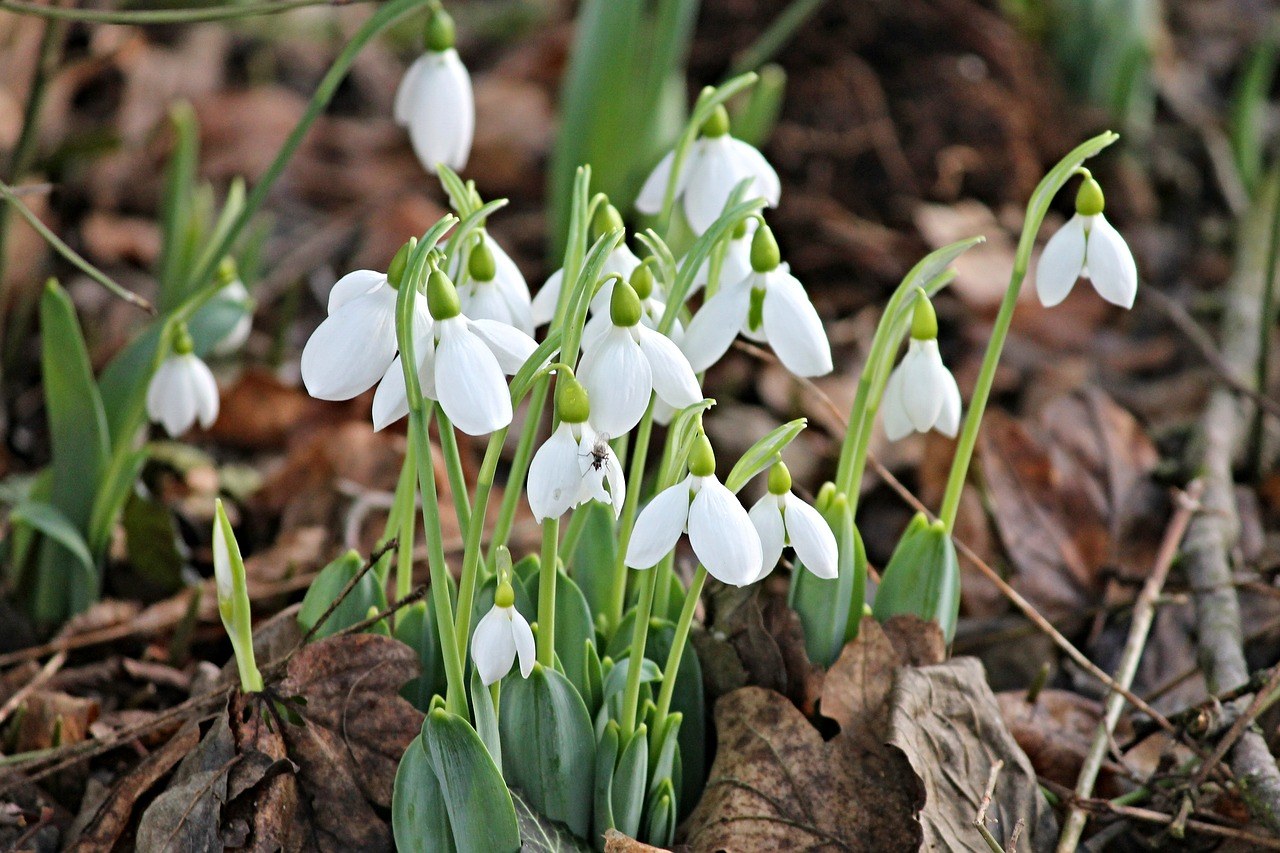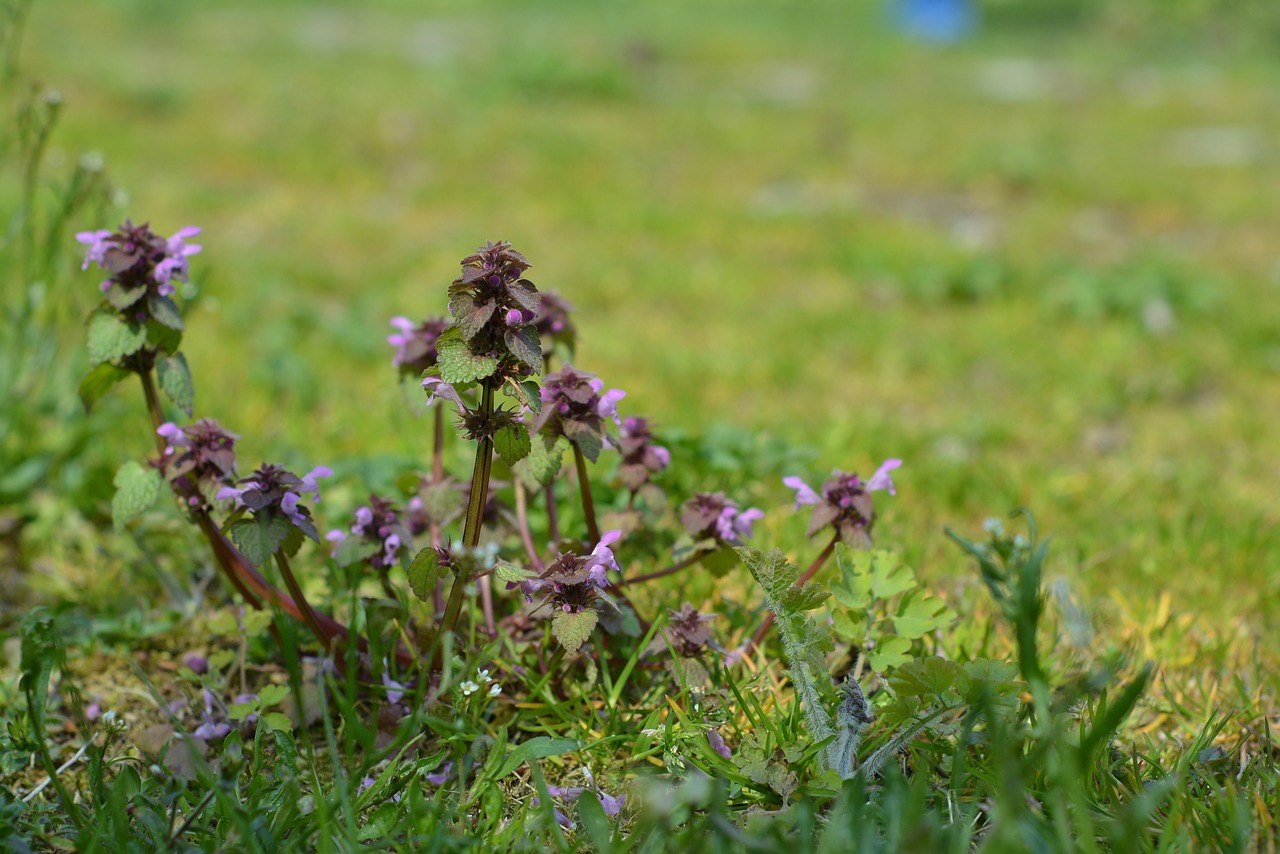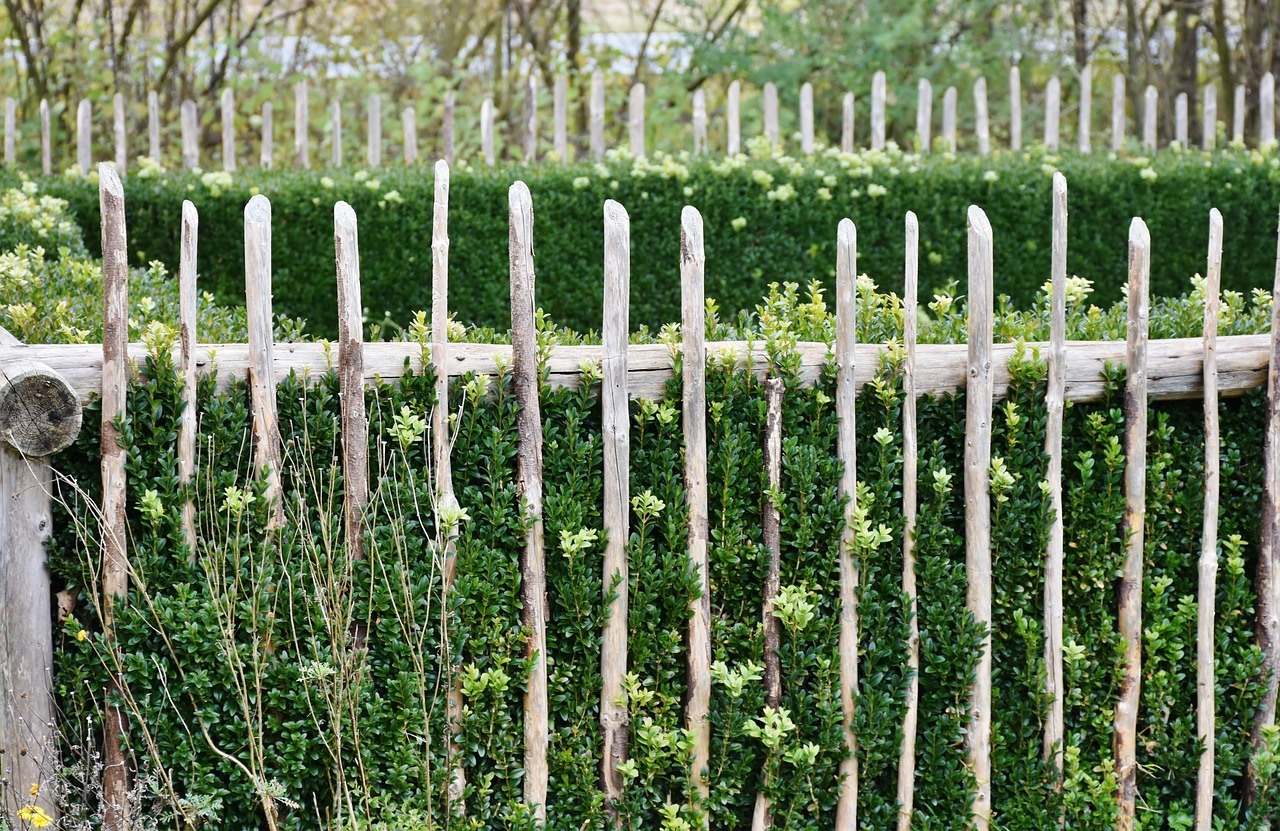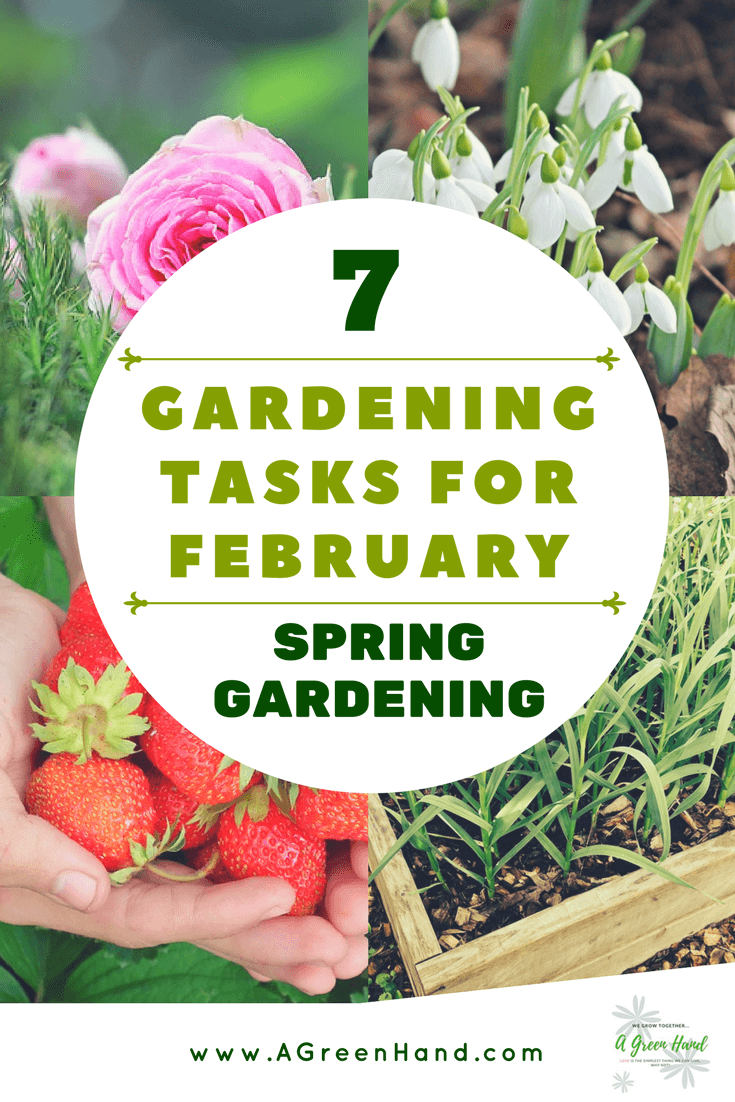There are many activities you can do in your garden at any time of the year. However, some are better conducted at a specific period. So, what gardening plans should you start at such an early part of the year? Here, we take a look at several gardening tasks and projects for February.
#1. Grow Vegetables
Growing Garlic

During February, you can grow several varieties of garlic such as Carcassonne Wight, Tuscany Wight, and Picardy Wright (especially the Solent Wight). You need to grow them in the spring since the temperature is still cool enough to encourage active growth. Likewise, they must be exposed to sunlight. By summer, they need the sun to undergo a dormant period.
Before you plant garlic, you need to break its bulb. The resulting coves will be what you plant two inches below the soil and with a six-inch gap between each other. Regardless of the garlic variety, you need to pull up the foliage once it withers or appears yellow. For going to lift the foliage will cause the garlic to utilize the energy in the bulb and resume plant growth.
As the garlic plants grow between March and June, they need regular watering. When you do harvest them, you need to dry them outdoors or in a shed before storing. Lastly, you need to store them in an open-weave box for sufficient ventilation.
Here is a video about planting garlic:
Grow and Harvest Other Vegetables
Apart from garlic, you can also grow vegetables such as radishes, parsnips, carrots, peas, and broad beans outdoors. As for indoor sowing, you could try cabbages, cucumbers, cauliflowers, broccoli, artichokes, peppers, leeks, and onions. Furthermore, February is a good time to harvest kale, parsnips, chicory, Brussels sprouts, and lettuce.
#2. Grow Flowers
Grow Snowdrops

February is also a great month for growing snowdrops. You can pick among many snowdrops varieties such as the greater snowdrop, the common snowdrop, and the Crimean snowdrop. You can plant them in flower beds, troughs, and in flower pots. Also, we recommend planting a lot of them since they look great in droves.
Snowdrops will typically thrive in partially shaded areas. You should apply compost to the soil before planting to prevent the snowdrops from drying out once summer arrives. You can grow the snowdrops underneath the trees or you can combine them with other plants such as hellebores, aconites, viburnum, and ornamental bramble. Maintaining snowdrops is easy as long as you remove the weeds and water them while their roots are being established in the soil.
Grow Other Flowers

Apart from snowdrops, you can grow other flowers such as Zinnia, Viola, and the Ptilotus flower in February. Zinnia is best grown in sunlit areas. You can grow them in pots or in a garden bed as long as they receive adequate heat. You should water the soil to provide enough moisture for the Zinnia plant, but it can survive dry periods. Also, blooming should be encouraged through the monthly application of liquid fertilizer.
Similarly, the Viola plant can withstand the warm summer temperature. However, it will start to wilt if you do not sprinkle water during extremely hot days. Furthermore, the flower will thrive regardless wherever you plant them, but it should ideally be grown in partially shaded areas. Just like the Zinnia flower, the Viola flower needs to be in moist soil.
Lastly, the Ptilotus flower is easy to maintain. It can tolerate both heat and humidity, especially if you grow it in well-drained soil. Also, the Ptilotus flower needs direct sunlight for bigger blooms. Its weakness is being overwatered. You can actually let the soil dry out between watering periods if you are growing the Ptilotus flower.
#3. Trim The Shrubs And Trees
Prune Roses

February is an ideal time to prune your roses. Regardless of the rose variety in your garden, any stems growing under the budding union should be removed. These stems are sucker growth. In addition, you must have a clean pair of shears. Ensure that they are sharp before pruning.
When you do make the cuts, they should be half an inch above a rosebud facing outwards. To prevent plant disease or rotting from occurring, the cuts should be done at a 45-degree angle. This will stop the cut section from developing too much moisture.
Prune Your Other Plants
You can also prune your gooseberries, apple trees, pear trees, and white currants at this time. For pruning blackcurrants, you should look for the established plants and cut down a third of the wood to the base of their stems as long as they are at least two years old.
You can also prune wisteria, jasmine, buddleia, hydrangea, honeysuckle, and Clematis Jackmanii after they have bloomed. For the latter, you can either cut the side shoots to allow just a pair of buds from the primary stem or prune it until its top section is only a foot away from the ground.
#4. Conduct Lawn Care
Removing Weeds

The first thing to properly manage weeds is to identify which ones exist in your garden. When they are just growing, it can be difficult to know whether they are going to be bad weeds or not. Sometimes, it’s too late when the seeds begin to scatter all over your garden.
One quick solution to this is to label and identify your perennial plants. You can place a stake or any sort of marker where your plants are located. You can write down their names on the markers if you want. This step will prevent you from accidentally uprooting your own plants as you remove the pesky weeds. When you do pull up the weeds, you must ensure that the roots are included to prevent them from growing again.
Mulching

A natural solution against weeds is to mulch. Creating a layer of organic mulch is easy. You just have to collect grass clippings, fallen leaves, and bark, among others (you can complete this task with a lawn sweeper and a mower). With a good layer of mulch, the weed seeds and seedlings won’t receive enough sunlight. They need this as they sprout and to firmly establish their roots in the soil. Without sunlight, the new weeds will perish.
Apart from this, mulching also improves your soil in many ways. Firstly, the mulch helps retain moisture. Secondly, a layer of mulch will prevent soil erosion. Thirdly, it keeps the soil at an even temperature while improving the overall appearance of your garden.
Cut Back Ornamental Grasses
Some homeowners prefer not to cut back their ornamental grasses, especially since they still look good in one’s garden. In fact, these grasses help in feeding the birds in your area. The problem, however, is that the same ornamental grasses can become the haven of pesky animals such as mice and voles.
During early spring, you should start to cut back the ornamental grasses. Late February is a good time since the old grass blades haven’t experience new growth. When this happens, it becomes difficult to remove both new and old blades.
First, you need to prepare your pruning shears and bungee cords on a sunny day with no signs of rainfall. If you have short grass varieties such dwarf fountain grass and blue fescue, you can use hand pruning shears. Their height should be reduced to just an inch to three inches above the soil.
For cutting back large grasses, you should first wrap grass clumps around the center using a bungee cord. Once you’ve wrapped the grass clumps, you can begin to cut the foliage located below the cord. Ensure that the grass is between three to six inches above the soil surface after cutting. Also, you can gather the foliage you cut down with the bungee cords and use them for composting.
Check For Water Requirements
Another aspect of lawn care is to know whether your lawn needs water or not. One way to check this is to look for any footprints. During February, you should be able to see some of your footprints as you walk in your garden. However, these should immediately disappear.
If your garden is dehydrated or is experiencing too much heat, it will lose a degree of elasticity. When this happens, the footprints could remain in your garden for minutes or even hours. In other words, you need to water your garden.
Another way to check for dehydrated soil is to look at the edges of garden beds. If the corners and sides begin to develop dry and dull or light-looking soil, they are undergoing heat stress. Similarly, you should search for soil gaps.
When your soil is undergoing drought stress, it begins to shrink the way a sponge does when it dries. Once you detect an unusual gap between your garden soil and the cement in your sidewalk or driveway, you should water your garden more.
Lastly, you can use a screwdriver to check if your garden needs water or not. If it’s difficult to insert the screwdriver into the ground, the soil is most likely too hard and compact. If it had enough moisture, the screwdriver should slide in easily. Thus, you need to water the soil.
#5. Fix The Fences

Another gardening-related task for February is to check the fences. You might be confused whether the fence between you and your neighbor’s property is yours. Especially when there is no deed from your neighbor indicating the need for a physical barrier in the form of walls, fences, and hedges. The fences might be nearer to his property, but it might not be his. Sometimes, a neighbor could post his fences in such a way that the non-post side faces his property.
If you want to change or repair the fences, you first have to look at the deeds or at least ask for help from the Land Registry. Similarly, there is nothing wrong with approaching your neighbor in a friendly manner. Ask permission from your neighbor whether you can repair the fences on your own. You can also ask your neighbor to fix his fences in case they begin to trespass on your garden.
#6. Make Compost

Composting is always a great way to improve the health of one’s garden. You can use bins and containers for your compost pile, depending on the size of your property. Decomposition of the organic material varies, as plant material could break down in as fast as two weeks or as long as a year.
Likewise, other materials decompose faster than others. Leaves and grass clippings will decompose faster than wooden branches and twigs. Still, we recommend that you cut or shred the sizable materials into smaller pieces. In addition, you should apply water to sustain moisture for your compost pile. However, be careful not to overwater it.
Also, don’t forget to regularly turn the compost pile around to allow air to reach all of the content. After all, the microorganisms that feed on the organic materials need air, water, and sustenance. Stirring the compost pit allows more oxygen to be absorbed and for heat to develop, which stimulates the decomposition process.
#7. Managing A Fruit Garden

Finally, you can tend to your fruits in February. For one, you could encourage your young strawberry plants to bear fruit early by placing them in a sunny area at the end of the month. To protect the immature shoots, we advise placing slug pellets around them. If you are not pollinating the strawberry plants by hand, you could remove the cloches when it’s warm to let insects pollinate the plant.
Similarly, both peaches and nectarines will experience robust growth if they receive sufficient sunlight. However, a late spring frost might occur and damage the blossoms and the newly growing sections. To keep your peaches and nectarines safe, you could cover the trees with netting or horticultural fleece that are kept in place using ties or wooden pegs.
Regardless of what fruits you grow, you should mulch the trees and garden rows. The mulch should be four inches thick and contain composted manure or any rich organic compost. This will give your fruit-bearing plants sufficient moisture throughout the season.
In conclusion, you can do a lot of gardening tasks in February. You can grow new flowers and vegetables apart from pruning and composting. You could even fix the fences, create layers of mulch, and check your garden for signs of heat stress.
We hope that our guide inspired you to maintain the health of your garden at this time of the year. If you have any questions, feel free to give us a comment.
Pin It!


